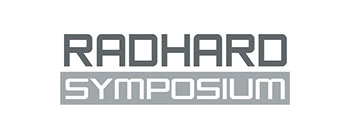Abstract

RADNEXT – Building a Network of Irradiation Facilities:
Achievements and Future Perspectives
Gerd Datzmann1, Ennio Capria2, Rubén García Alía3
1 Datzmann interact & innovate, Germany
2 ESRF, France
3 CERN, Switzerland
Abstract
Radiation hardness qualification procedures for electronic components and systems often require testing at facilities – providing highly energetic protons, heavy ions, neutrons, electrons, gammas and to some extent pulsed X-rays, lasers, etc. – emulating the radiation effects of the devices under test close to reality. These probing radiations are generated mostly at particle accelerators or research reactors located almost exclusively at universities or publicly funded research institutions. Thus, users from industry as well as users from space agencies or academia are dependent on these organizations for providing them a fee-based service.
Interviews with experts in the field show a growing demand for testing versus a quasi-static offering from the facilities, with this being particularly true for testing with high energetic heavy ions. The matching of demand and supply is perceived as one of the biggest challenges in this field today and in the upcoming years. Radiation hardness assurance with respect to Single Event Effects (SEE) testing of electronic devices in Europe is performed in a limited number of facilities that offer professional beam-time service on a regular basis to external commercial customers. In the recent years, more and more companies are entering the field of radiation hardness assurance of electronic components. In addition, the pressure to minimize costs not only for commercially driven projects, is adding new requirements and constraints. One measure for lowering costs could be to use facilities in the own country avoiding long travels and customs issues. On the other side, established facilities provide a full-service approach and try to enable an efficient component testing workflow with little waiting times for their customers.
These challenges were the main reason why the European Union (EU) funded a network of 21 irradiation facilities in an infrastructure program called RADNEXT [1] (RADiation facility Network for the EXploration of effects for indusTry and research). This 4-year project was launched in June 2021 and aims – besides others – to tackle the aforementioned topics with a set of measures and initiatives. In general, RADNEXT has the goal to ease the access for external users and to harmonize the procedures. Via Transnational Access (TA) funding from the EU, more than 6000 hours of beam time are awarded free of charge to users from academia and industry.
This presentation will summarize the achievements of the TA program after almost three years of the RADNEXT project. Furthermore, the participation and engagement of industrial actors in the program will be highlighted. Since RADNEXT is an infrastructure program, some activities have been dedicated to observing the facility landscape and to develop a roadmap for the future of radiation testing. Therefore, planned upgraded of facilities currently delivering beams for radiation hardness assurance will be depicted as well as existing facilities that intend to start the business of providing beam time. Additionally, there is an ongoing discussion on building new facilities suitable for providing beam time to external users for radiation hardness testing. Since the RADNEXT project is scheduled to come to an end in June 2025, a few thoughts and ideas will be shared how this infrastructure network of facilities that has been established in the past years could be continued in a way that is beneficial for both facilities and users.
References
[1] R. G. Alía et al., "Heavy Ion Energy Deposition and SEE Intercomparison Within the RADNEXT Irradiation Facility Network," in IEEE Transactions on Nuclear Science, vol. 70, no. 8, pp. 1596-1605, Aug. 2023, doi: 10.1109/TNS.2023.3260309.
Acknowledgments
RADNEXT has received funding from the European Union's Horizon 2020 research and innovation programme under grant agreement No 101008126
![[Translate to English:] [Translate to English:]](/fileadmin/uploads/intranet/events/radhard/2023/header-radhard2023.jpg)
